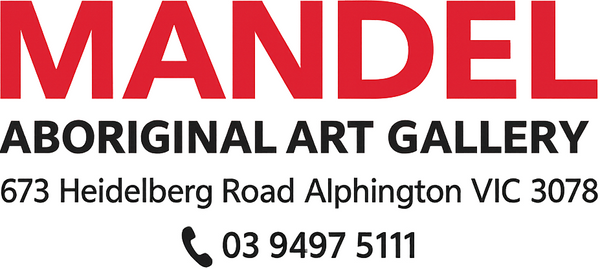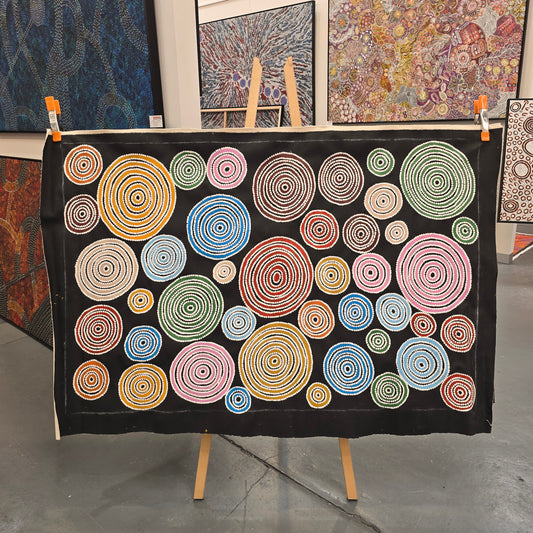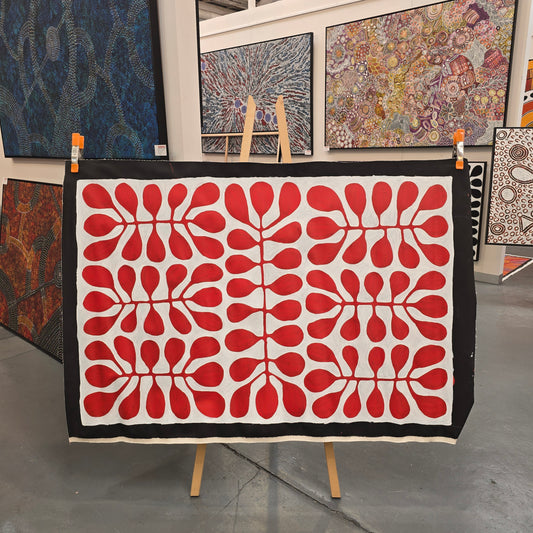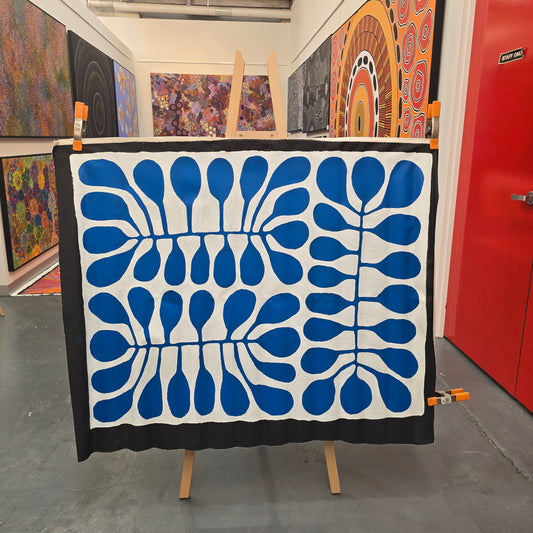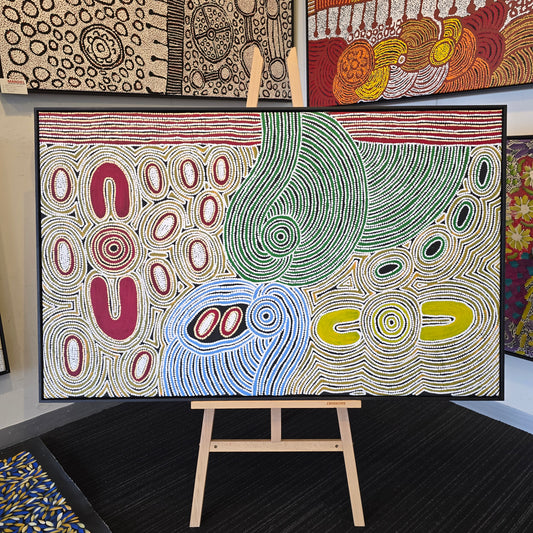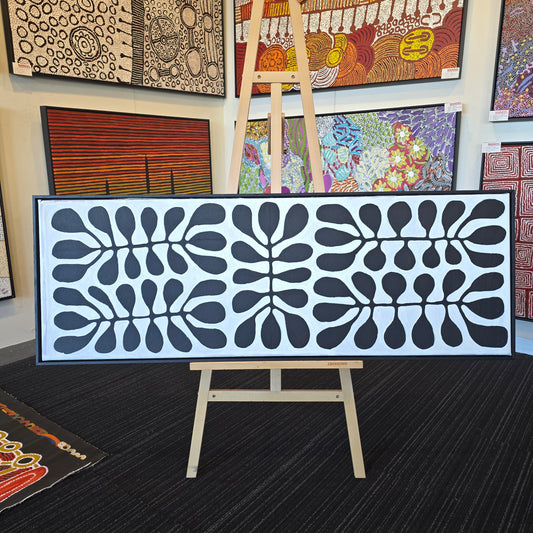Collection: Debra McDonald Nangala
-
Debra McDonald 1500 mm x 2000 mm
CODE : 6343Vendor:Debra McDonald NangalaRegular price $4,500.00 AUDRegular priceUnit price / per$5,500.00 AUDSale price $4,500.00 AUDSale -
Debra McDonald Nangala 900 mm x 1200 mm
CODE : 5539Vendor:Debra McDonald NangalaRegular price $999.00 AUDRegular priceUnit price / per$1,900.00 AUDSale price $999.00 AUDSale -
Debra McDonald Nangala 920 mm x 1450 mm
CODE : 5540Vendor:Debra McDonald NangalaRegular price $2,550.00 AUDRegular priceUnit price / per -
Debra McDonald Nangala 940 mm x 1470 mm
CODE : 5512Vendor:Debra McDonald NangalaRegular price $2,900.00 AUDRegular priceUnit price / per -
Debra McDonald Nangala 920 mm x 1220 mm
CODE : 5520Vendor:Debra McDonald NangalaRegular price $2,600.00 AUDRegular priceUnit price / per -
Debra McDonald Nangala 1200 x 2000mm
CODE : 6344Vendor:Debra McDonald NangalaRegular price $4,500.00 AUDRegular priceUnit price / per -
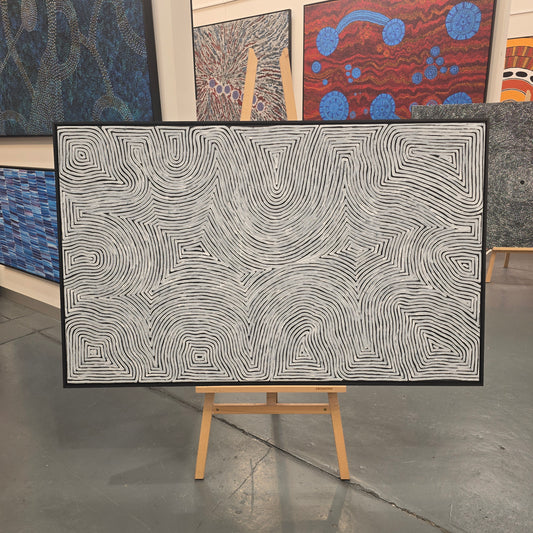 Sold out
Sold outDebra McDonald 940 mm x 1500 mm
CODE : 5642Vendor:Debra McDonald NangalaRegular price $2,900.00 AUDRegular priceUnit price / per -
Debra McDonald Nangala 1130 mm x 1730 mm
CODE : 6341Vendor:Debra McDonald NangalaRegular price $3,900.00 AUDRegular priceUnit price / per -
Debra McDonald 940 mm x 1480 mm
CODE : 6362Vendor:Debra McDonald NangalaRegular price $2,750.00 AUDRegular priceUnit price / per$3,500.00 AUDSale price $2,750.00 AUDSale -
Debra McDonald 660 mm x 930 mm
CODE : 6129Vendor:Debra McDonald NangalaRegular price $1,200.00 AUDRegular priceUnit price / per -
Debra McDonald 480 mm x 630 mm
CODE : 8113Vendor:Debra McDonald NangalaRegular price $850.00 AUDRegular priceUnit price / per -
Debra McDonald Nangala 540 mm x 1600 mm
CODE : 6131Vendor:Debra McDonald NangalaRegular price $1,750.00 AUDRegular priceUnit price / per$2,900.00 AUDSale price $1,750.00 AUDSale
Debra McDonald Nangala
Debra McDonald Nangala is an accomplished Australian Aboriginal artist known for her vibrant and intricate paintings depicting the Dreamtime stories and landscapes of her ancestral homeland. Born in the mid-1960s in Papunya, Northern Territory, Nangala is a respected member of the Luritja and Pintupi people.
Early Life and Cultural Heritage
Debra McDonald Nangala, born in the mid-1960s in Papunya, Northern Territory, is an eminent Australian Aboriginal artist whose work portrays her Luritja and Pintupi cultural background. Nangala was born and raised in the desert country community of Kintore, which is situated approximately 530 kilometres west of Alice Springs, and as such, she was effectively raised in a traditional Pintupi culture.
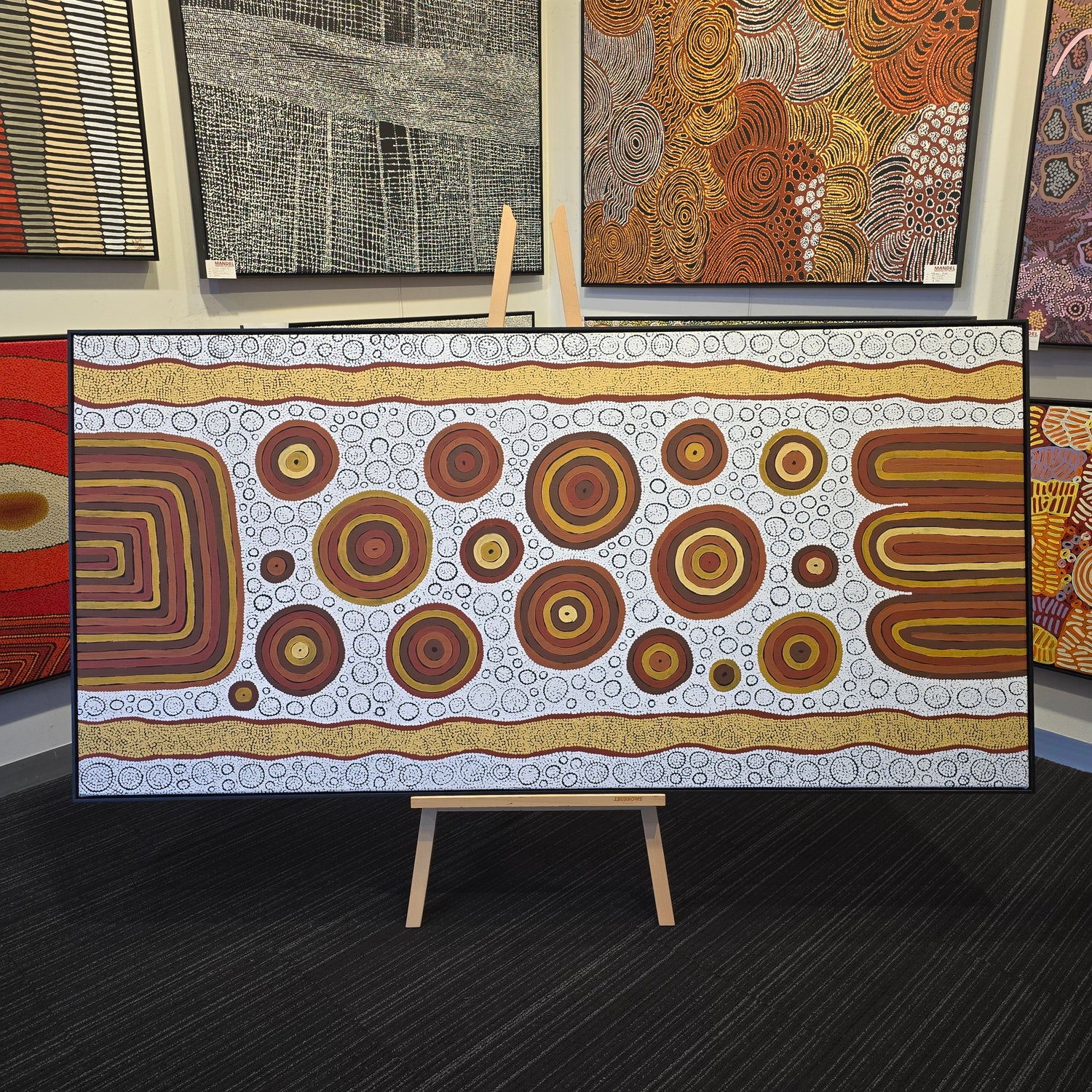
Born and raised in this remote area of the desert, Nangala was active in a culture that allowed everyone to live by dreaming, singing, and some traditional practices. The climatic conditions and geography of the Western Desert painted by red dirt, spinifex grasses and archaeological murals imprinted on the psyche of that part of Australia did influence her and later feature vividly in her paintings.
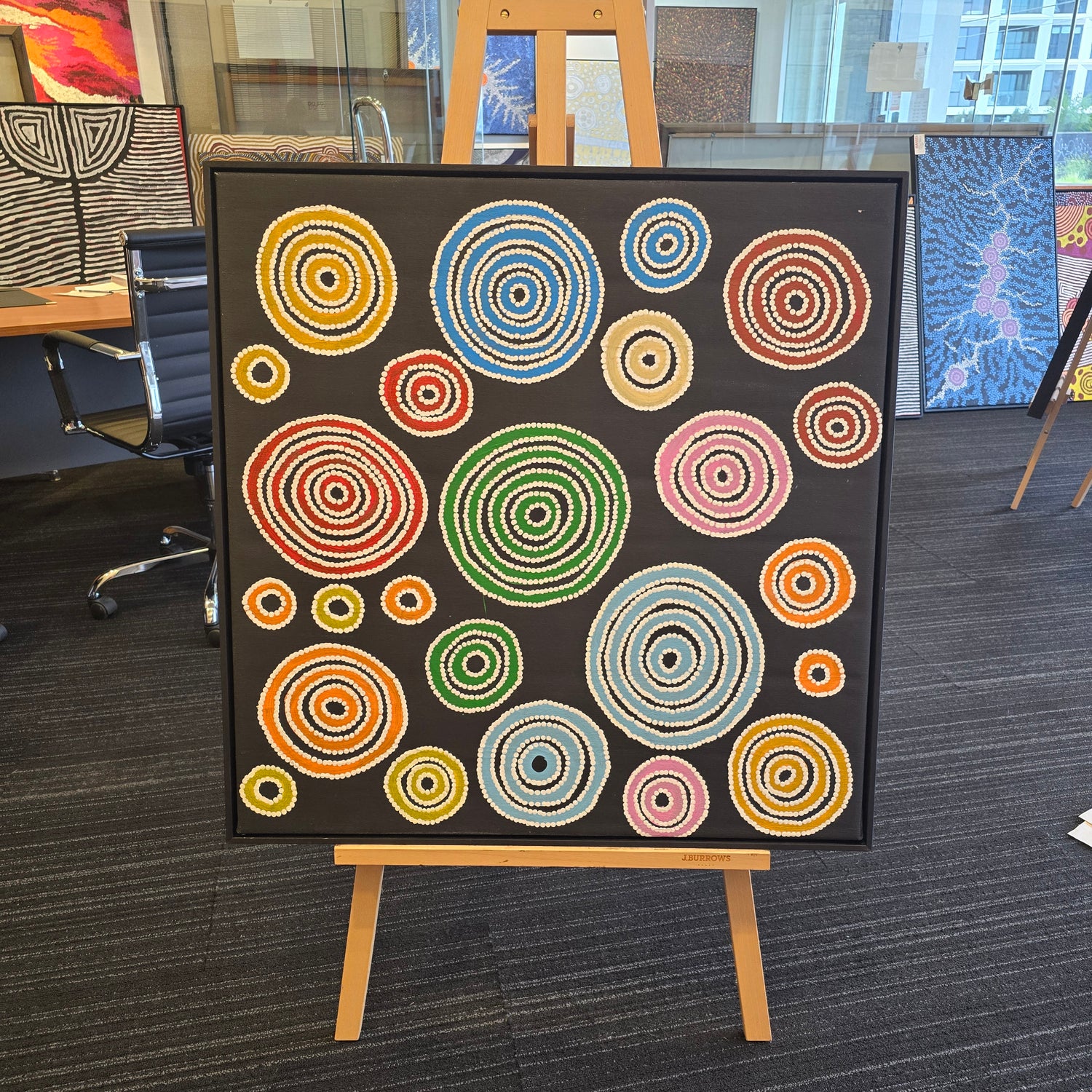
Growing up, she was introduced to and taught the proper relationships, how the tribe feeds itself, and some practices followed by her people up to date. These formed the basis of her relationship with the country and as a keeper of the cultural memory.
Artistic Development
The Western Desert Art movement was already well developed by the late 1990s when Debra McDonald Nangala started painting. The art movement of the Papunya Tula art movement which began in early 1973 had transformed significant current Aboriginal art and provided international exposure to a new style of desert painting.
Nangala's artistic development was influenced by several factors. Some of her relatives including her father were artists included in the Papunya Tula movement. They guided her in such a way and inspired her in such a way as to form her style and brand in the best way. Studying in group art classes gave Nangala technical training and occasion to view other people’s more specialised painting manners.
Through her vast knowledge and culture of Pintupi codes of law and customs that have been acculturated over generations, her works were full of symbolism and narratives. The special features of her aboriginal territories, such as the salt lakes, sand hills, and rock holes were to become her major themes. When already expressing herself, Nangala started defining a unique style that included the depiction of both traditional motifs and the use of contemporary hues and compositions.
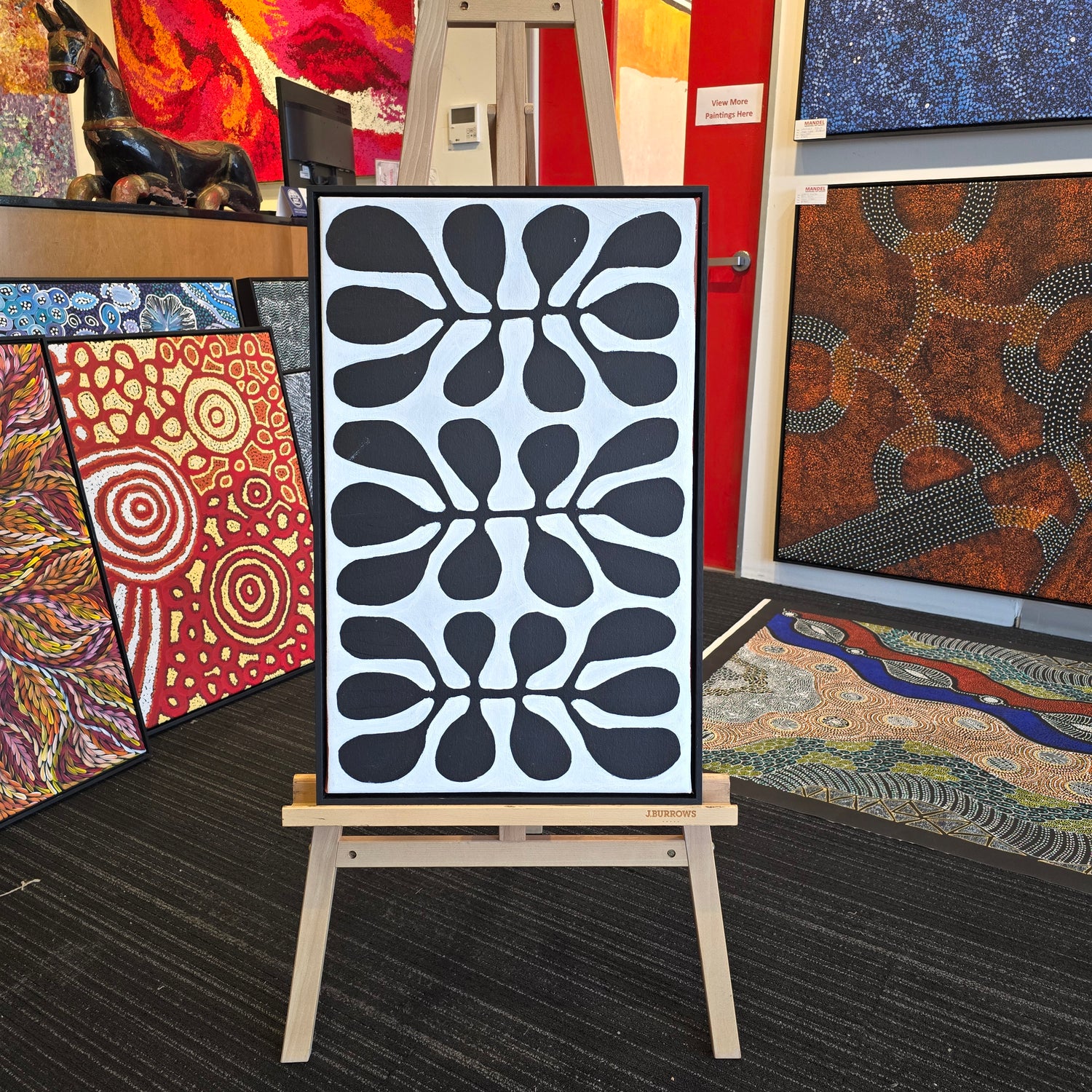
Artistic Style and Themes
Artworks by Nangala represent the unique energetic, detailed, and highly meaningful murals of Indigenous people. Her work is immediately recognizable for its bold colour palette. Although adhering to earthy colours, Nangala freely embeds rich blue, purple and green which produces the impression of a brilliant and disorientating optical contrast to the traditional palette of the Western Painting.
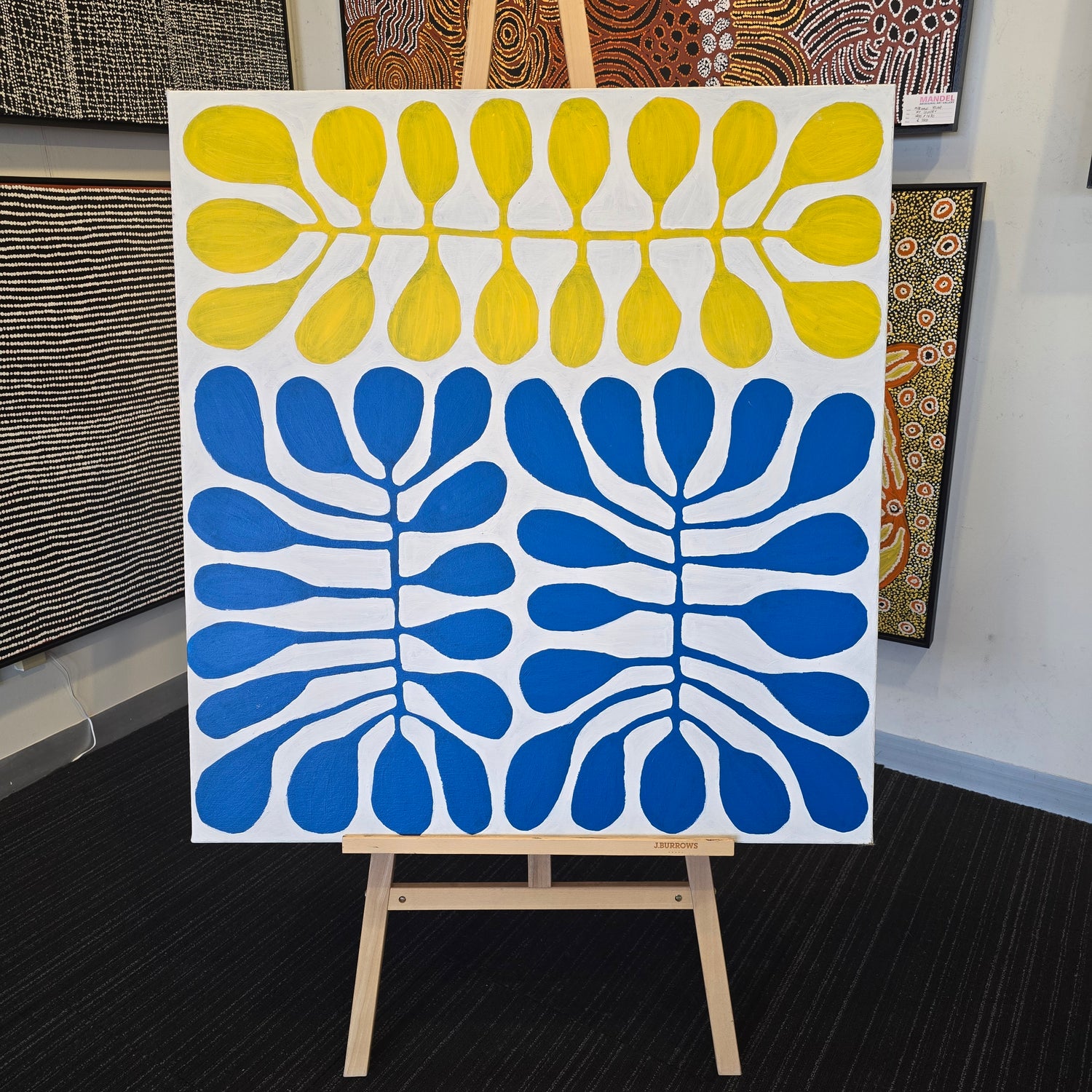
Her dots are not just ‘embellishment’; she makes many intricate patterns using dots that refer to water, sand hills and spiritual energy. These paintings not only signify certain landmarks, ancestral beings, and stories but also the outer layer of painting fascinated the audiences with the apparently abstract painting. Some of the works of Nangala depict the vivid and energetic sensation as well as the rhythm of the Dreaming and rolling territory of the desert.
Key themes in Nangala's work include Women's Ceremonies, and illustrations of the secret-sacred aspects of women’s council, including ceremonies, meetings, and knowledge sharing. She also tells a story of the Tingari Cycle Dreaming, where her ancestors moved across the land dreaming up the physical and spiritual geography during the Dreamtime.
Her paintings showcase Bush Tucker Stories, which depict marks of original food selections and trademarks of associated collection and preparation customs. Her artwork is inspired by the water resources in the desert and the representation of artesian, soakages and other such holy water sites.
Notable Exhibitions and Achievements
Debra McDonald Nangala has established herself domestically and internationally throughout her career. Some of her significant exhibitions and achievements include:
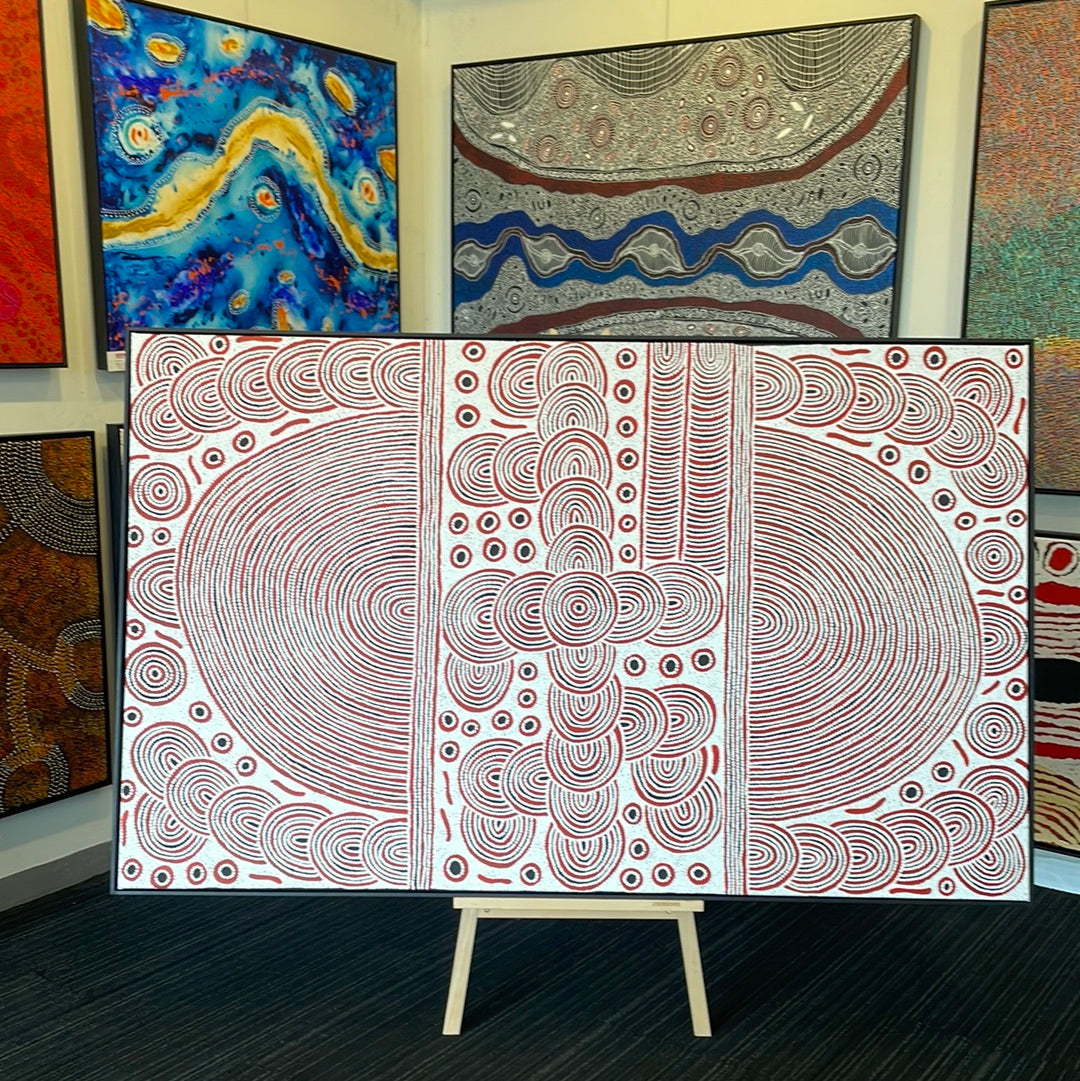
Solo Exhibitions
- Indigenous Art Gallery Melbourne “Desert Dreamings” July 2005
- Ancestral Connections Sydney-based Cooee Art Gallery Exhibition (2010)
- The collection titled “Nangala’s Vision” at the Aboriginal Signature Estrangin Gallery, Brussels was created in 2015.
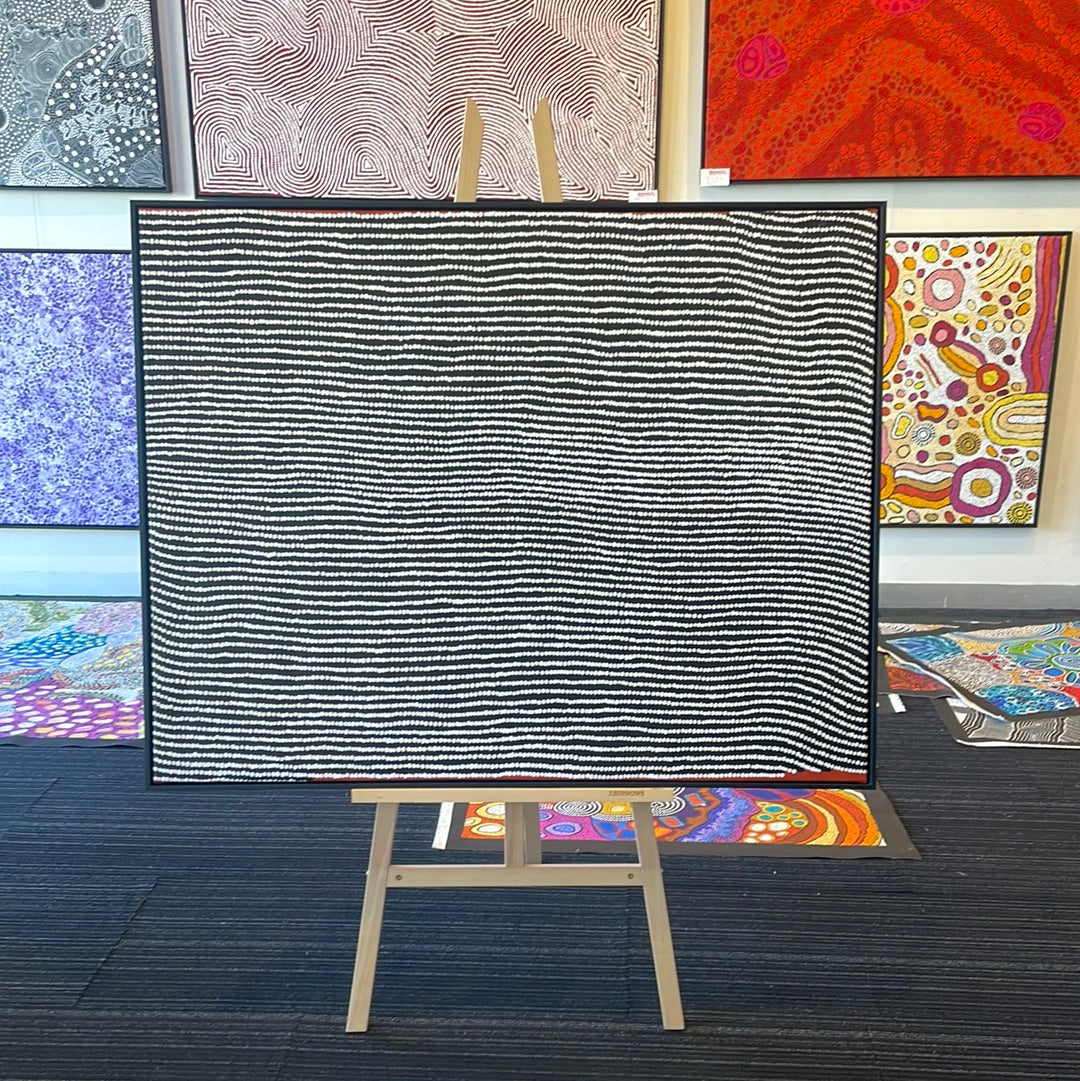
Group Exhibitions
- "Desert Stars: Featured exhibition: The Art of the Western Desert” exhibited at the Art Gallery of New South Wales (2007).
- Telstra National Aboriginal & Torres Strait Islander Art Awards held in Darwin (Any Year)
- The “Desert Mob” annual art exhibition in Alice Springs since 2000.
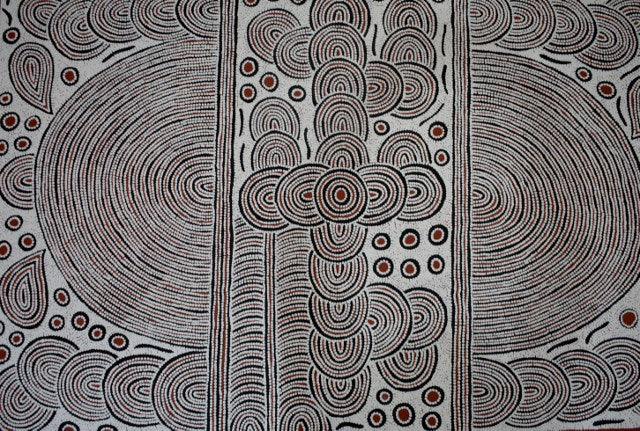
Awards and Recognition
- Two-time contender, Telstra National Aboriginal & Torres Strait Islander Art Award (2008, 2012)
- Winner of Alice Prize for Contemporary Australian Art 2011.
- Artist in Residence at the Kluge-Ruhe Aboriginal Art Collection of The University of Virginia (2014)
Legacy and Impact
The contributions by Debra McDonald Nangala have ensured the continued generation of Western desert painting as an aboriginal art form. In her pursuit, she has combined elements of history telling and art with contemporary practice, guaranteeing that the tradition of her people is witnessed into the 21st century.
Being an Indigenous Australian, Nangala does not only maintain cultural identity through her artwork but also, offers the community an economic aspect. The achievements of one artist like Nangala have gone a long way in providing continuity for those Indigenous communities and building Aboriginal pride.
Debra McDonald Nangala as a successful contemporary Australian Aboriginal deserves not only the attention of her compatriots and fellow artists but also the admiration of art lovers from all over the world.
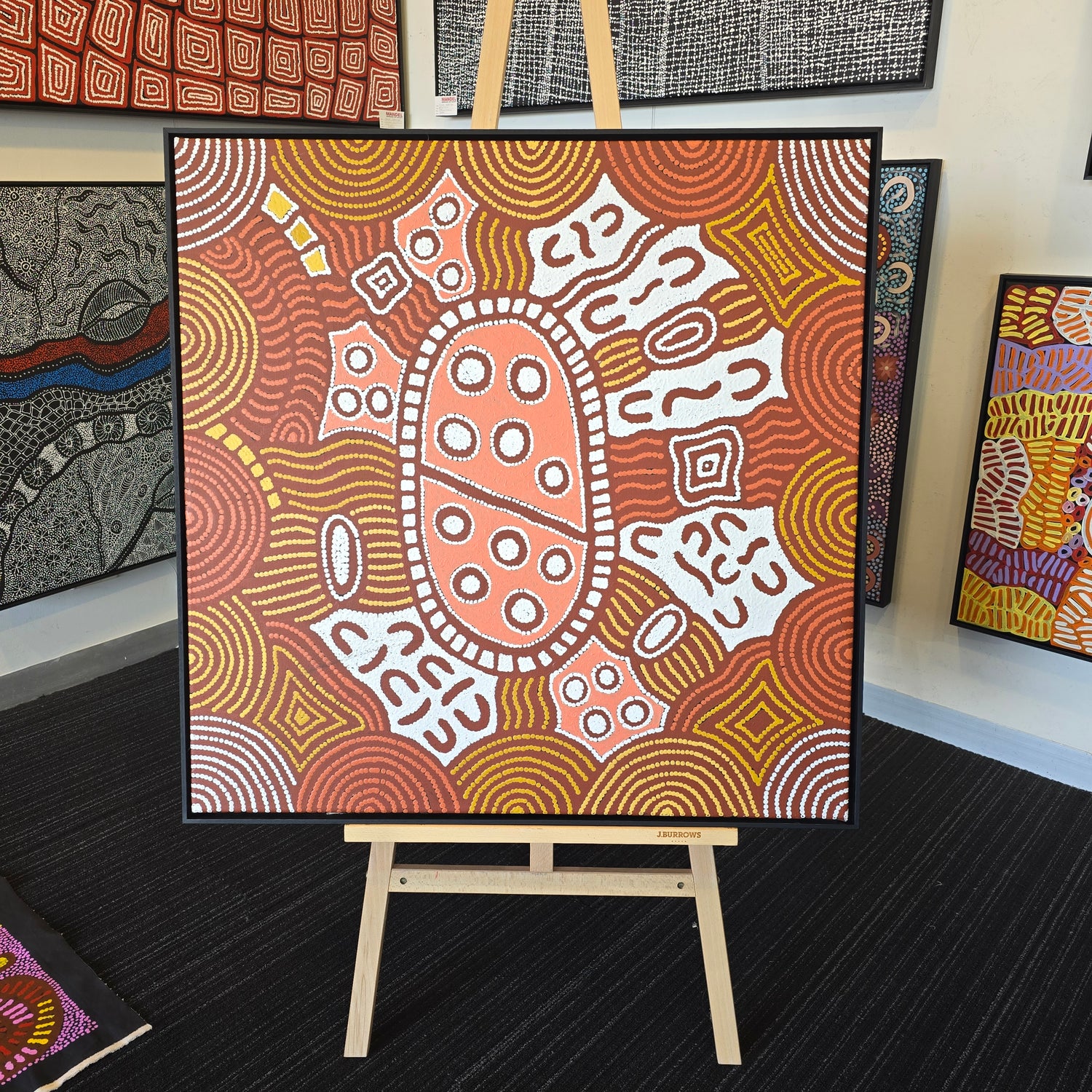
Experience the art of Debra McDonald with Mandel
The elaborate paintings by Debra McDonald Nangala open one to Australian Aboriginal art, a kind invitation to embrace the Indigenous people’s history of the Western Desert.
Engage with Debra McDonald Nangala's powerful art at the Mandel Aboriginal Art Gallery today. It's more than just viewing art – it's participating in the continuity of one of the world's oldest living cultures.
Learn more about Debra McDonald Nangala by visiting Mandel Aboriginal Art Gallery. You can also contact us or call us at 03 9497 5111 to know and support the vibrant Indigenous community and their art.
